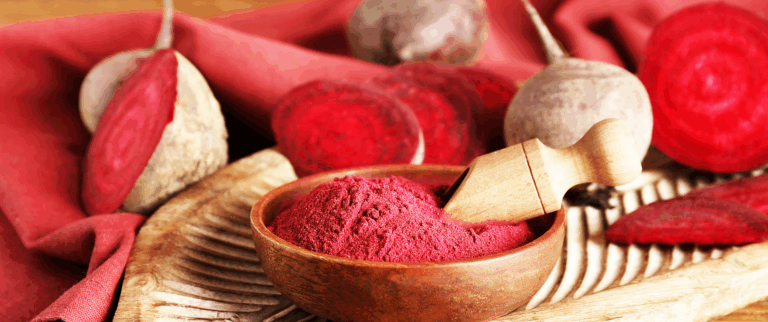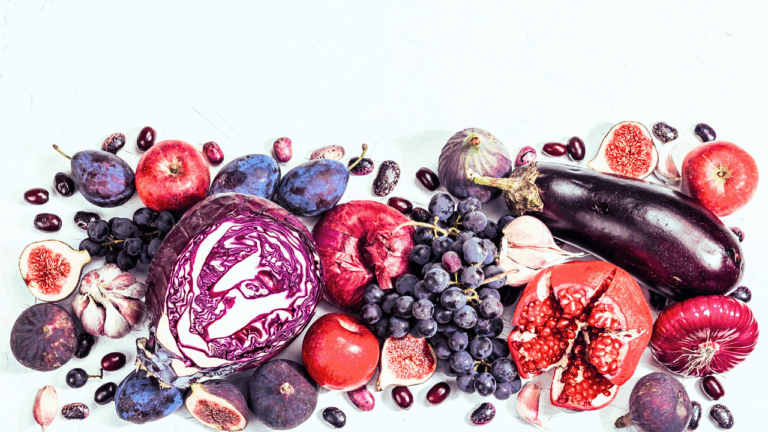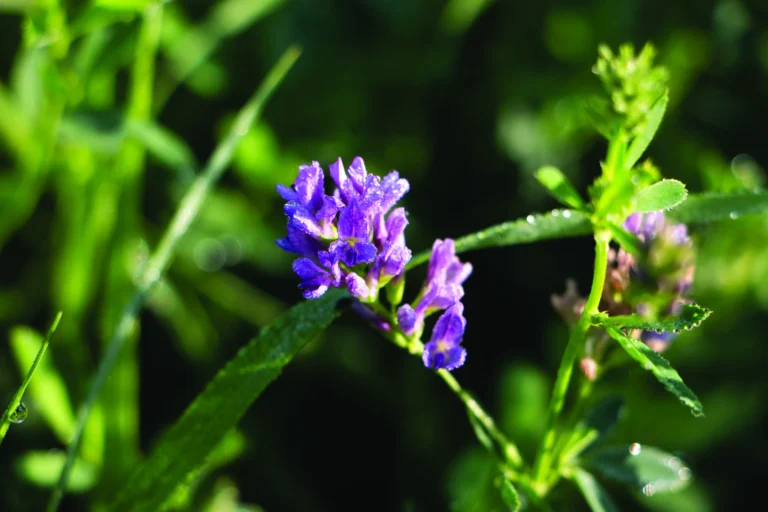Cruciferous Vegetables: Phytonutrient Powerhouse
Cruciferous Vegetables: Phytonutrient Powerhouse
Health Benefits of Cruciferous Vegetables
These plant foods are highly prized for their nutritional value and even more so for their phytonutrient content. Cruciferous vegetables are high in vitamin C, fiber, folate and other B vitamins, vitamin K, potassium, calcium, and magnesium. They are also rich sources of important phytonutrients including carotenoids, polyphenols, and glucosinolates, which include indole-3-carbinol (I3C) (derived from the breakdown of glucobrassicin found in cruciferous vegetables) and sulforaphane (an isothiocyanate derived from glucoraphanin, a glucosinolate).
The combination of vitamins, minerals, and health-promoting phytonutrients give cruciferous vegetables (or brassicas) their many health benefits, more of which have yet to be discovered. While research on these plant foods continues, one thing is clear: diets rich in cruciferous vegetables have been associated with decreased risk for chronic disease, as well as other important health benefits.
List of Cruciferous Vegetables
Members of the Brassica family include:
- Broccoli
- Cauliflower
- Kale
- Watercress
- Cabbage
- Brussels sprouts
- Bok choy
- Arugula
- Collard greens
- Mustard greens and seeds
- Turnips
- Rutabaga
- Wasabi
Addressing Hyperthyroidism
While cruciferous vegetables and their phytonutrients have been associated with a multitude of health benefits, there has been a long-standing suspicion that excessive amounts may be contraindicated in cases of hypothyroidism. Goitrin and thiocyanate are both anti-nutrients found in cruciferous vegetables that may reduce iodine absorption in the thyroid, which can potentially result in decreased synthesis of thyroid hormone. However, these compounds are deactivated by light cooking, which is great news for those concerned with the potential “goitrogenic” effect of crucifers. Practitioners may opt to advise those with hypothyroidism to eat mostly cooked crucifers.
With their wealth of health benefits and wide variety of choices, regularly including brassica vegetables in the diet is a daily habit that is likely to pay off. As more research emerges about the mechanisms for these health benefits, brassicas will continue to be highly prized for their nutritional value, and even more so for their unique phytonutrient content.
Supporting Detoxification
Brassicas contain unique phytonutrients called glucosinolates, which are sulfur-containing molecules that exist almost exclusively in cruciferous plant foods. These compounds are converted to bioactive molecules within the body that support glutathione synthesis and up-regulate phase II detoxification enzymes in the body. DIM, indole-3-carbonol, and sulforaphane are examples of compounds derived from glucosinolates found in cruciferous vegetables, and they help to modulate detoxification in the body. Regular consumption of cruciferous vegetables may help to protect people with gene variants, or single nucleotide polymorphisms (SNPs), that affect key detoxification pathways.
CRUCIFEROUS VEGETABLES & ESTROGEN
DIM and indole-3-carbonol also support the detoxification and elimination of estrogen metabolites, which may be helpful for hormonal balance and protective against estrogen sensitive cancers.
Cancer: Reducing Risk with Antioxidant Activity
Research has long linked a diet rich in cruciferous vegetables with a reduced risk for certain cancers, namely breast, colorectal, lung, and prostate cancers. While their anti-inflammatory benefits certainly play a role in decreasing the risk for these cancers, the ability of these vegetables to support healthy detoxification pathways, via DIM and indole-3-carbonol, may also play a protective role against cancer. Glucosinolates may offer protection against certain cancers by modulating the activity of enzymes that detoxify carcinogens and metabolize sex hormones.
One example is nuclear factor-2 (Nrf2), a transcription factor that plays a role in regulating inflammation and cancer prevention by up-regulating the genes that encode for antioxidant and detoxification enzymes like superoxide dismutase (SOD) and glutathione transferase (GST). Brassica phytonutrients, especially sulforaphane, support phase II detoxification and increase antioxidant capacity by working through the Nrf2 signaling pathway, which essentially instructs the body to increase its own production of antioxidant and detoxification enzymes.
Supporting Cardiovascular Health
Observational studies around the world have connected diets high in cruciferous vegetables with decreases in heart disease risk and mortality. The same pathways that support the immune system, and quell inflammation and oxidative stress in the body, such as Nrf2, have also been shown to reduce inflammation in the cardiovascular system. The anti-inflammatory effects of sulforaphane may help to explain the inverse relationships between cruciferous vegetable intake and heart disease risk and mortality. In addition to decreasing oxidative stress and inflammation, diets high in these vegetables may reduce low-density lipoprotein (LDL) cholesterol and protect against LDL oxidation in humans., Pre-clinical studies have found that brassicas may promote optimal platelet function, may have an anti-thrombotic effect, and may prevent atherosclerosis.
- Wagner A.E., Terschluesen, A.M., Rimbach, G. (2013). Health promoting effects of brassica-derived phytochemicals: from chemopreventive and anti-inflammatory activities to epigenetic regulation. Oxid Med Cell Longev; 2013:964539. doi: 10.1155/2013/964539.
- Ambrosone, C.B., Tang, L. (2009). Cruciferous vegetable intake and cancer prevention: role of nutrigenetics. Cancer Prev Res (Phila); 2(4):298-300. doi: 10.1158/1940-6207.CAPR-09-0037.
- Abdull Razis, A.F., Noor, N.M. (2013). Cruciferous vegetables: dietary phytochemicals for cancer prevention. Asian Pac J Cancer Prev; 14(3):1565-70.
- Zhang, X., Shu, X.O., Xiang, Y.B., et. al. (2011). Cruciferous vegetable consumption is associated with a reduced risk of total and cardiovascular disease mortality. Am J Clin Nutr; 94(1):240-6. doi: 10.3945/ajcn.110.009340.
- Bai, Y., Wang, X., Zhao, S., et. al. (2015). (2015). Sulforaphane protects against cardiovascular disease via Nrf2 activation. Oxid Med Cell Longev; 2015:407580. doi: 10.1155/2015/407580.
- Pagliaro, B., Santolamazza, C., Simonelli, F., Rubattu, S. (2015). Phytochemical compounds and protection from cardiovascular diseases: A state of the art. Biomed Res Int.; 2015:918069. doi: 10.1155/2015/918069.
- Armah, C.N., Derdemezis, C., Traka, M.H., et. al. (2015). Diet rich in high glucoraphanin broccoli reduces plasma LDL cholesterol: Evidence from randomised controlled trials. Mol Nutr Food Res; 59(5):918-26. doi: 10.1002/mnfr.201400863.
- Felker, P., Bunch, R., Leung, A.M. (n.d.). Concentrations of thiocyanate and goitrin in human plasma, their precursor concentrations in brassica vegetables, and associated potential risk for hypothyroidism. Nutrition Reviews, 74(4):248-258.
- Migliozzi, M., Thavarajah, D., Thavarajah, P., Smith, P. (2015). Lentil and kale: Complementary nutrient-rich whole food sources to combat micronutrient and calorie malnutrition. Nutrients, 7(11):9285-98. doi: 10.3390/nu7115471.
- Bhandari, S.R., Jo, J.S., and Lee, J.G. (2015). Comparison of glucosinolate profiles in different tissues of nine brassica crops. Molecules; 20(9):15827-41.
- Kim, S.Y., Yoon, S., Kwon, S.M., et al. (2008). Kale juice improves coronary artery disease risk factors in hypercholesterolemic men. Biomed Environ Sci, 21(2):91-7. doi: 10.1016/S0895-3988(08)60012-4.
- Kahlon, T.S., Chiu, M.C., Chapman, M.H. (2008). Steam cooking significantly improves in vitro bile acid binding of collard greens, kale, mustard greens, broccoli, green bell pepper, and cabbage. Nutr Res, 28(6):351-7. doi: 10.1016/j.nutres.2008.03.007.
- Yang, I.F., Jayaprakasha, G.K., Patil, B.S. (2017). In vitro bile acid binding capacities of red leaf lettuce and cruciferous vegetables. J Agric Food Chem; 65(36):8054-8062. doi: 10.1021/acs.jafc.7b02540. Epub 2017 Aug 31.
- Brussel Sprouts. (2017). Retrieved from http://www.whfoods.com/genpage.php?tname=foodspice&dbid=10
- Kim, J.K., Shin, E.C., Kim, C.R., et al. (2013). Effects of brussels sprouts and their phytochemical components on oxidative stress-induced neuronal damages in PC12 cells and ICR mice. J Med Food;16(11):1057-61. doi: 10.1089/jmf.2012.0280.







